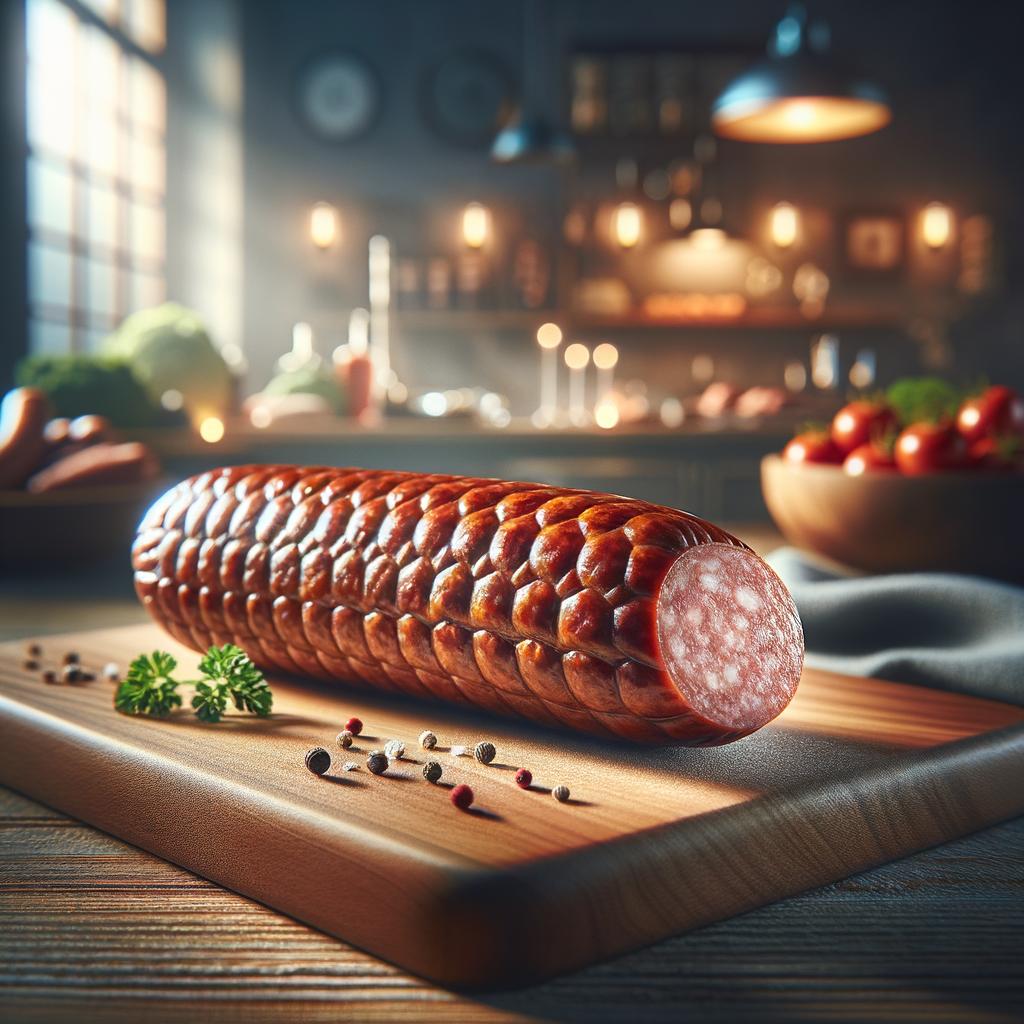Thüringer Rostbratwurst

Thüringer Rostbratwurst
Description
The Thüringer Rostbratwurst is a unique sausage hailing from the heart of Germany. It is a long, thin delicacy, usually measuring 15-20cm, with a distinctive pale color that turns a rich, golden brown upon grilling. Its texture is firm yet yielding, with a juicy interior that bursts with flavor upon the first bite. The Thüringer Rostbratwurst is a symphony of flavors, combining the robustness of pork, the subtle sweetness of veal or beef, and the aromatic blend of marjoram, caraway and garlic. Its uniqueness lies in its Protected Geographical Indication (PGI) status, which requires it to be produced in Thuringia using a traditional recipe.
Primary Uses
The Thüringer Rostbratwurst is primarily grilled or roasted, a testament to its name 'Rost' meaning 'grill'. It is a staple at German barbecues and a key component in hearty meals, often served with sauerkraut and mashed potatoes. This sausage also finds its place in the popular Thüringer Rostbratwurst soup, a comforting dish perfect for cold winter nights. Beyond its culinary uses, the Thüringer Rostbratwurst holds a cultural significance in Thuringia, where it is celebrated with an annual festival.
History
The Thüringer Rostbratwurst has a rich and romantic history dating back to 1404, making it one of the oldest bratwurst varieties. It was first mentioned in the council records of the city of Arnstadt, Thuringia. Over the centuries, it has been a source of sustenance for the people of Thuringia, with its popularity spreading across Germany and beyond. The Thüringer Rostbratwurst has been linked to several folklores, the most popular being the story of a medieval butcher who saved a town from starvation during a siege by creating these sausages.
Nutritional Information
The Thüringer Rostbratwurst is a good source of protein, essential for muscle growth and repair. It also provides a substantial amount of B vitamins, particularly B12, which supports nerve function and the production of DNA. However, like other sausages, it is high in fat and should be consumed in moderation. Compared to other bratwurst varieties, the Thüringer Rostbratwurst has a slightly higher fat content due to the inclusion of pork belly in its recipe. Nonetheless, its unique flavor and rich history make it a beloved ingredient worth savoring.

